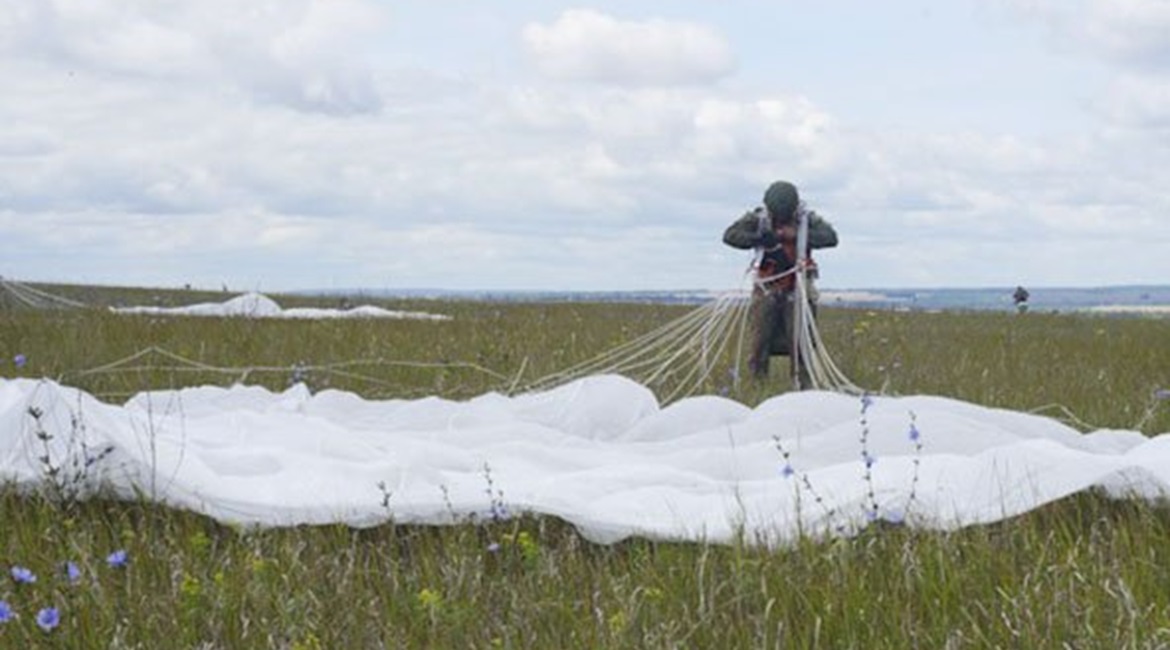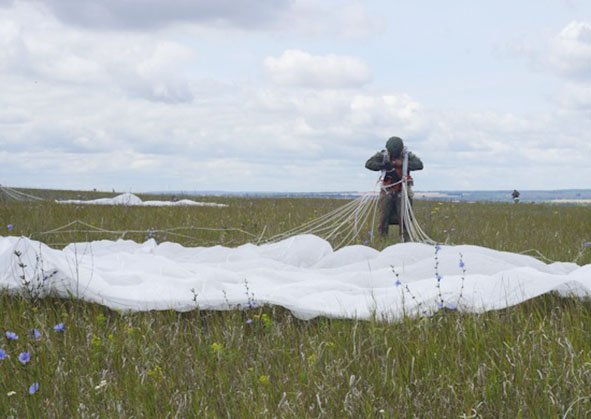
Russia is to begin trials of its D-14 Shelest (Rustle) parachute designed to provide airborne forces with the ability to fire personal weapons during a parachute landing, Vladimir Kachalov, chief designer from Russia’s Research Institute of Parachute Making (RIPM), told the state-owned TASS on 2 August.

A VDV trooper collects his D-10 parachute after a landing. That process can be slow and create a vulnerability if the formation is deployed directly into combat. (Russian MoD)
The D-14 is designed around the Ratnik soldier system, which consists of Alutex fibre aramid overalls that are fireproof and provide some protection from fragmentation. Body armour is included in the Ratnik ensemble and it can be extended to include hip and shoulder protection, as well as a helmet, for a total weight of 20 kg.
In addition to body armour, a paratrooper has small arms on his chest, which are accessible to him and are in his hands. Previously, [they] were unavailable because a spare parachute was located in front and, naturally, an assault rifle was fastened from below and was beyond reach so the paratrooper could not instantly get hold of it, Kachalov told TASS. The D-14 enables troopers to use their personal weapons the moment that they deploy the parachute, he said.
The development is likely linked to the recently redefined role of the Russian airborne forces, the Vozdushno-Desantnye Voiska (VDV). The VDV are required to be capable of defensive and offensive roles, and regularly practise parachute landings in the Arctic and into water. The latter is especially useful if the force is required to capture a Baltic island, explained Igor Sutyagin and Justin Bronk, in their paper titled Russia’s New Ground Forces: Capabilities, Limitations, and Implications for International Security .
Looking to read the full article?
Gain unlimited access to Janes news and more...




